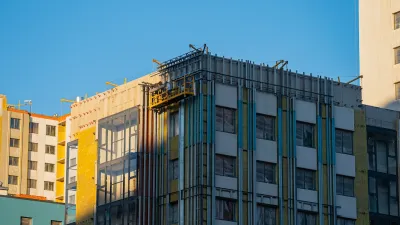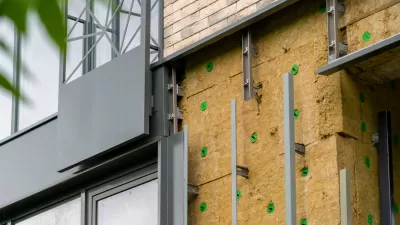William Pentland notes a crescendo in the clamor for green buildings in the upscale, commercial market.
As the fascination with green design gains momentum, environmentally minded practices become the standard. Nowhere is that more apparent than in commercial real estate, where in recent years, the market for sustainable products has skyrocketed – driven more by demand than government regulation.
"In 2010, a third of all new commercial construction was green, amounting to a $54 billion market for commercial green buildings," Pentland writes. "By 2015, green buildings in the commercial sector are expected to triple."
But the trend has not been consistent across the board. Commercial buildings are categorized into three classes based on their "ability to attract high-value tenants:" Class A buildings are typically home to high-profile offices, demanding above-average rent; on the other end of the spectrum, Class C buildings are merely functional spaces at below-average rent.
And, quite predictably, "the green paradigm has achieved the deepest penetration" in the Class A market.
As Pentland explains, "Many tenants are willing to pay a premium for space in green buildings because of the lower operating costs, higher worker productivity and reputational benefits associated with the superior environmental performance of green buildings."
FULL STORY: The Brilliant Economics of Green Buildings

Maui's Vacation Rental Debate Turns Ugly
Verbal attacks, misinformation campaigns and fistfights plague a high-stakes debate to convert thousands of vacation rentals into long-term housing.

Planetizen Federal Action Tracker
A weekly monitor of how Trump’s orders and actions are impacting planners and planning in America.

San Francisco Suspends Traffic Calming Amidst Record Deaths
Citing “a challenging fiscal landscape,” the city will cease the program on the heels of 42 traffic deaths, including 24 pedestrians.

Defunct Pittsburgh Power Plant to Become Residential Tower
A decommissioned steam heat plant will be redeveloped into almost 100 affordable housing units.

Trump Prompts Restructuring of Transportation Research Board in “Unprecedented Overreach”
The TRB has eliminated more than half of its committees including those focused on climate, equity, and cities.

Amtrak Rolls Out New Orleans to Alabama “Mardi Gras” Train
The new service will operate morning and evening departures between Mobile and New Orleans.
Urban Design for Planners 1: Software Tools
This six-course series explores essential urban design concepts using open source software and equips planners with the tools they need to participate fully in the urban design process.
Planning for Universal Design
Learn the tools for implementing Universal Design in planning regulations.
Heyer Gruel & Associates PA
JM Goldson LLC
Custer County Colorado
City of Camden Redevelopment Agency
City of Astoria
Transportation Research & Education Center (TREC) at Portland State University
Jefferson Parish Government
Camden Redevelopment Agency
City of Claremont





























